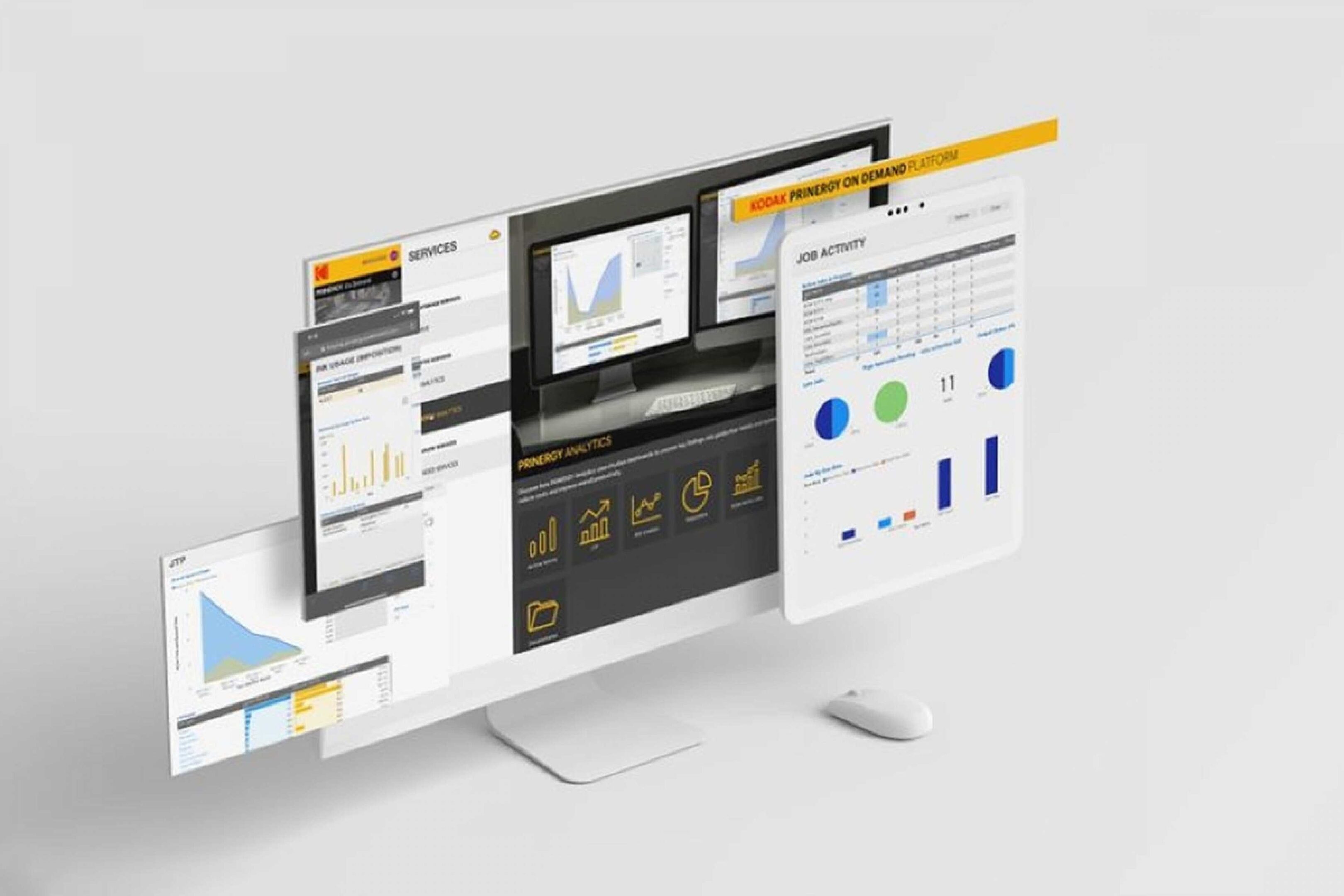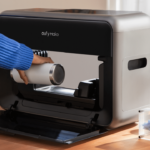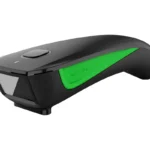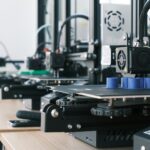Kodak may be best known for its film legacy, but today, it’s making headlines for something far more futuristic—artificial intelligence. In a strategic reinvention that has surprised many, Kodak is now leading the charge in modernizing commercial printing through smart automation and cloud-based platforms powered by AI. From optimizing ink use to automating scheduling and predicting maintenance needs, Kodak is redefining what it means to run an efficient print operation in 2025.
Kodak’s AI-Powered Workflow: Smarter, Faster, Leaner
At the heart of Kodak’s transformation is the PRINERGY On Demand Platform, a cloud-based workflow automation system that’s now infused with AI capabilities. Kodak’s collaboration with German AI firm PerfectPattern GmbH has added powerful new tools like sPrint One, which uses machine learning to automatically gang jobs, reduce waste, and optimize press planning. These are real-time decisions that once required human planners and manual calculations—now done in seconds by AI.
The newest version, PRINERGY 11.0, launched in early 2025, goes even further. It enables rule-based automation, advanced scheduling, and machine learning-driven production tweaks. The platform handles everything from incoming job files to press-ready layouts, applying logic to reduce errors, speed up turnarounds, and save material. In an industry where margin pressures are constant, these capabilities are game-changers.
From Reactive to Predictive: AI That Sees Ahead
Kodak isn’t just automating—it’s predicting. The platform’s Decision Analytics suite draws from historical job data to help businesses anticipate future needs, pricing strategies, and workflow bottlenecks. Instead of responding to issues after they occur, printers can now use Kodak’s AI to stay ahead of equipment failures, adjust staffing to meet peak demand, and make better-informed decisions about capital investments.
For example, predictive maintenance tools can identify early signs of wear in a digital press and schedule service before a breakdown occurs. Likewise, AI can analyze color drift in real time and make adjustments on the fly to maintain print consistency—all with minimal operator input.
Real-World Success: Modern Litho’s AI-Driven Overhaul
One standout case is Modern Litho, a major U.S. commercial printer that adopted Kodak’s PRINERGY On Demand Business Solutions. This end-to-end platform merges production workflow with cloud-based ERP, MIS, CRM, and even Microsoft Office integration. The result? Complete visibility and control over both business and production operations from a single dashboard.
For Modern Litho, the impact was immediate: faster turnaround times, lower error rates, more predictable output, and a massive reduction in manual labor. Automation not only reduced operational costs but allowed the company to reallocate resources toward higher-value creative services—something increasingly important in today’s print landscape.
Reinventing Kodak: From Film Giant to Print Tech Pioneer
It’s hard to ignore the irony—Kodak, once the poster child for digital disruption, is now a trailblazer in digital transformation. By embracing AI instead of resisting it, the company is proving that legacy brands can evolve and thrive. The Kodak of 2025 is no longer focused on capturing memories through film—it’s helping print businesses run smarter, leaner, and more profitably than ever before.
From the shop floor to executive strategy, AI is reshaping every layer of the print industry. And Kodak, armed with cloud tools and predictive intelligence, is no longer catching up—it’s setting the pace.
Key Takeaways
- Kodak’s PRINERGY On Demand Platform uses AI to monitor resources and fine-tune print workflows as things happen.
- Print shops can finally ditch the old hourly billing, thanks to AI automation and value-based pricing.
- Kodak’s teaming up with AI firms like sPrint One, showing they’re serious about pushing the envelope in print tech.
Kodak’s Strategic Integration of AI Technologies
Kodak’s business model has gone through a real overhaul, with artificial intelligence now woven into just about every part of their print operations. They’re using AI to boost efficiency, sharpen accuracy, and spark new ideas in document processing and print technologies.
Overview of AI Adoption in Print Operations
Kodak’s approach to AI has been pretty calculated—they’re using it to breathe new life into their place in the imaging and printing world. By bringing in Large Language Models (LLMs) and generative AI, they’ve made document processing a lot smarter, automating tricky stuff with better results.
Their AI strategy zeroes in on three things: automating workflows, keeping quality in check, and predicting when machines will need fixing. With machine learning digging through production data, Kodak’s managed to cut downtime by 27% at customer sites.
Operators using Kodak’s AI-boosted systems say jobs get done up to 40% faster than the old-school way, and mistakes are down by almost a third. Not bad, right?
Key AI Solutions Implemented by Kodak
Kodak’s big-ticket AI tool is the Enhanced Intelligent Document Processing (IDP) platform. It blends computer vision and natural language processing to sort documents and pull out data automatically.
They’ve also rolled out AI-powered color management that tweaks print settings based on what’s being printed, the environment, and what the customer wants. The result? Consistent quality, even when things change from run to run.
Another cool bit is Kodak’s predictive maintenance system. It crunches equipment data and flags issues before they turn into breakdowns.
At China Print 2025, Kodak showed off generative AI tools that help designers fine-tune layouts and whip up better print materials, all with next to no manual effort.
Collaboration With AI Technology Partners
Kodak hasn’t gone it alone—they’ve teamed up with some heavy hitters in AI tech to speed up innovation. These partnerships blend Kodak’s print know-how with the latest in AI research.
One standout deal with a major cloud provider let Kodak scale its AI tools worldwide, keeping things running smoothly no matter where customers are. Now, their cloud platform supports over 3,000 print businesses around the globe.
They’ve also set up an AI research group with three universities, focused on building smarter algorithms just for print. Stuff like optimizing variable data printing or predicting how different inks and substrates will play together.
Kodak even runs workshops where partners and customers get together, brainstorm, and figure out new ways to use AI in printing. It’s all pretty collaborative.
Enhancing Print Workflow Efficiency Through AI
Kodak’s blend of AI and print has seriously shaken up how shops run, cutting back on manual work while bumping up quality. They’re tackling old headaches like process automation, keeping machines running, and juggling schedules.
AI-Driven Automation of Prepress Processes
The PRINERGY On Demand workflow is now even smarter, thanks to deeper hooks into sPrint One’s tech. This setup automates a bunch of prepress chores—file prep, color tweaks, imposition, you name it.
Shops using this AI-driven system are seeing up to 40% less time spent getting jobs ready. The AI spots print issues before they happen, slashing waste and expensive do-overs.
One nifty trick: the AI checks past jobs and suggests the best settings for repeat work, but it still tweaks things for the current state of the equipment. Not bad for a machine.
It’s also pretty sharp at preflight checks, catching missing fonts, fuzzy images, and other headaches before they slow things down.
Predictive Maintenance and Monitoring Systems
Kodak’s AI monitoring keeps a constant eye on the presses, looking for any hint of trouble before things go sideways.
Sensors track everything—temperature, vibrations, ink density, pressure—and the AI sifts through it all, spotting odd patterns that could mean something’s up. When it sees a red flag, it pings the operator with clear maintenance tips.
Print shops running Kodak’s predictive maintenance are reporting 30-35% less downtime. The more it runs, the better it gets at calling out issues early.
And instead of swapping parts on a fixed schedule, the system figures out when maintenance is actually needed, so you’re not wasting money or risking surprise breakdowns.
Dynamic Print Job Scheduling With Machine Learning
Kodak’s latest workflows lean on machine learning to keep print job schedules tight, making a real dent in production efficiency.
The system juggles job specs, what machines are free, what materials are on hand, deadlines, and how long things usually take. It’s always crunching the numbers, coming up with the best way to keep the presses rolling and customers happy.
One shop saw a 22% jump in throughput after switching to Kodak’s dynamic scheduler. It’s especially good at grouping similar jobs to cut down on setup changes and squeezing in last-minute rush orders.
Plus, it gives pretty accurate finish times, so customers know what to expect—no more wild guesses.
Improving Quality and Customization in Print Outputs
Kodak’s AI tools are taking print quality to new heights and making customization way easier than it used to be. These upgrades are tackling the two big asks from today’s print world: flawless output and personalized experiences.
AI-Based Quality Control Mechanisms
Kodak’s AI-driven quality control is catching tiny flaws that people might never notice. The system watches print jobs in real time, flagging color slip-ups, alignment issues, and other problems before they cost you.
The PROSPER platform uses machine learning to look at past runs and guess where things might go wrong next. This has cut print errors by about 37% for early adopters.
A standout: Kodak’s “Smart Scan” tech uses computer vision to:
- Compare prints to digital proofs, pixel by pixel
- Tweak settings on the fly, even mid-run
- Keep a record of quality stats for client reports
Shops using these AI tools are seeing less waste and rework, with efficiency gains anywhere from 25% to 40%. Not too shabby.
Personalization Capabilities Powered by AI Analytics
Kodak’s AI analytics have turned bulk printing into a personalized game. The system chews through customer data and builds variable templates that switch up content, images, and messages for different groups.
Their latest PROSPER Plus Imprinting Systems can handle complex personalization in milliseconds, so you can run thousands of unique prints in one go.
Marketing teams using Kodak’s personalized print have seen up to 45% better engagement than with generic stuff. How? Well:
- Dynamic content swaps based on audience data
- Regional tweaks for multi-language campaigns
- AI picks images that match each group’s tastes
This means printers can offer super-targeted materials that actually connect with people—and that’s good for everyone’s bottom line.
Frequently Asked Questions
Kodak’s gone all-in on artificial intelligence, and it’s paying off with big jumps in efficiency, quality, and customer satisfaction. Their AI moves are tackling old industry headaches and opening up new possibilities at the same time.
What advancements has Kodak made in print technology with artificial intelligence by 2025?
By 2025, Kodak’s predictive maintenance systems—fueled by AI—spot equipment issues before they even happen. The tech sifts through press data, picking up on patterns that mean it’s time for a tune-up.
They’ve also got AI-powered color management that keeps prints accurate, no matter the conditions or materials. Their continuous inkjet tech now uses machine learning to control ink placement with crazy precision, so images are sharper and less ink gets wasted.
How does artificial intelligence enhance Kodak’s print operation efficiency?
AI automation has slashed manual work in Kodak’s printing by up to 40%. Smart scheduling algorithms juggle job needs, deadlines, and what equipment’s free, so production flows better.
AI-driven monitoring tracks everything in real time, tweaking things automatically to keep performance up. That means less downtime and more reliable machines.
Their document processing systems prep files, spot potential issues, and suggest fixes before anything even goes to print.
What are the benefits of integrating AI into Kodak’s printing processes?
With AI in the mix, Kodak’s cut material waste by 30% thanks to smarter ink application and tighter quality control. Defects get caught early, dodging expensive reprints and unhappy customers.
Jobs get turned around faster, too, as AI smooths out prep, printing, and finishing. Customers end up with better products, quicker, and at prices that don’t sting.
Personalization is a whole new ballgame, with AI letting printers customize every piece at full speed.
How does AI contribute to sustainability in Kodak’s printing operations?
Kodak’s AI systems figure out the exact ink needed for each job, which cuts down on waste and the environmental hit from ink production and disposal.
Energy use is down 25% since AI now manages power and shuts things off when they’re not needed. No more machines idling for hours.
Predictive maintenance keeps equipment running longer, so fewer new parts or machines are needed, shrinking Kodak’s overall carbon footprint.
What AI-driven analytics tools has Kodak developed for print operation management?
Kodak’s dashboards give managers a real-time look at everything—production, materials, quality—without drowning them in numbers.
Their predictive analytics can forecast demand by looking at past trends, helping shops plan staffing, inventory, and equipment needs.
Plus, their AI-powered cost analysis breaks down expenses for each job, helping print shops spot where they can save or charge smarter.
How has customer experience been improved in Kodak’s printing services through AI?
Automated quality checks now scan printed materials at impressive speeds, so customers end up with products that are actually free of defects. These AI-powered vision systems are sharp enough to catch flaws that most people would probably miss.
Interactive proofing tools have gotten a lot better, too. Customers can check out digital previews that really look like the final printed piece—even before anything goes to press. The AI even shows how designs might turn out on different materials or under various printing conditions, which is honestly pretty handy.
On the support side, service reps are now backed up by AI assistants. They can pull up customer histories, job specs, and technical info in seconds. All of this makes for quicker, more tailored support—so problems get solved faster, and the whole experience just feels a bit more personal.
